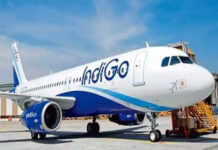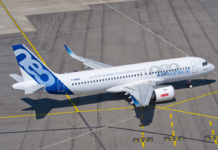 ST. LOUIS: St. Louis is turning 250 this year, and visitors who want to join in the celebration can find plenty to do without spending a dime.
ST. LOUIS: St. Louis is turning 250 this year, and visitors who want to join in the celebration can find plenty to do without spending a dime.
The Gateway City was founded by Pierre Laclede and Auguste Chouteau on Feb. 15, 1764. A series of anniversary events are planned throughout the year. Some are serious, including a reenactment of the founding on Feb. 15 at the Laclede’s Landing area on the Mississippi Riverfront downtown. Others are more whimsical, like a “Burnin’ Love” festival in which 250 couples are expected to become engaged on Valentine’s Day.
Amid the hoopla, there’s plenty to do for free, including visits to one of the world’s biggest breweries, two popular animal attractions, a science center and a towering monument that has come to define St. Louis.
GATEWAY ARCH
The iconic Arch, built as a monument to westward expansion, stands 630 feet tall (192 meters) along the banks of the Mississippi River. For a fee, visitors can ride a tram to the top of the Arch and gaze over downtown St. Louis to the west or the cornfields of Illinois to the east.
But many attractions at and around the Arch are free. That includes the Museum of Westward Expansion in the basement of the Arch, focusing on life in the West in the 1800s. Visitors can also wander the expansive Arch grounds, where a multi-million dollar upgrade project is under way and expected to be completed by 2016.
Also free are visits to the Old Courthouse in downtown St. Louis, also operated by the National Park Service. The courthouse was the site of the famous Dred Scott case that played a role in eventually freeing the slaves.
Construction of the Arch, designed Eero Saarinen, began in 1963. The final piece connecting the two legs was installed in 1965, and the Arch opened to visitors on May 25, 1968.
ANHEUSER-BUSCH BREWERY TOUR
The Busch family sold Anheuser-Busch to the Belgian brewer InBev in 2008, but the massive brewery remains an integral part of St. Louis, making some of the nation’s best-selling brews, including Budweiser and Bud Light.
The complimentary tours are open to visitors of all ages – but only those 21 and older can taste the finished product after the tour. Younger visitors get soft drinks.
Visitors not only get a glimpse of how the beer is made but see the Budweiser Clydesdales, kept at stables on the brewery site.
Reservations are required. Anheuser-Busch also offers a more comprehensive “Beermaster Tour” and “Beer School,” though neither is free.
The brewery itself is in the eclectic Soulard area near downtown. Soulard Market nearby offers a variety of fresh produce, meats and other goods.
GRANT’S FARM
The 281-acre (114 hectares) Grant’s Farm is owned by the Busch family. It got its name because the property was founded as a farm by Ulysses S. Grant, the Civil War general who later became the nation’s 18th president.
The farm, in St. Louis County just south of the city, is home to more than 900 animals. Among them: Another group of Budweiser Clydesdales.
More than 24 million people have visited Grant’s Farm since it opened in 1954. Reservations are required.
ST. LOUIS ZOO
The St. Louis Zoo in sprawling Forest Park is considered one of the best in the nation, and one of the few that with no admission fee. Funding comes from a cultural tax district, the Metropolitan Zoological Park and Museum District, though fees are charged for some special attractions.
The zoo is home to more than 18,000 animals, including some rare and endangered species. A “Zooline Railroad” takes visitors to various locations and is popular, especially among children.
The zoo’s origins date to the 1904 St. Louis World’s Fair, when the city purchased the Flight Cage from the Smithsonian Institution. Over the years, new exhibits and animals were added.
The zoo is open 9 a.m. to 5 p.m. most days; 9 a.m. to 3 p.m. on Thanksgiving, Christmas Eve and New Year’s Eve; and closed on Christmas and New Year’s Day.
ST. LOUIS SCIENCE CENTER
The Science Center, also part of Forest Park and funded through the same cultural subsidy as the zoo, is among the few free science centers in the U.S. It was founded as a planetarium in 1963. Today, the center includes more than 750 exhibits in 300,000-plus square feet (28,000 square meters) of space, making it one of the nation’s largest science centers. About 1.2 million people visit it each year.
The center itself is free, but fees are charged for admission to some special exhibits and planetarium shows. An Omnimax Theater also charges for admission.
The center features an enclosed walkway over Interstate 64 in which visitors can monitor the speeds of cars traveling below. -AP






